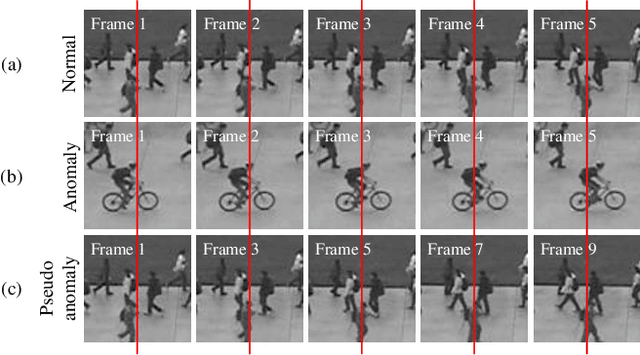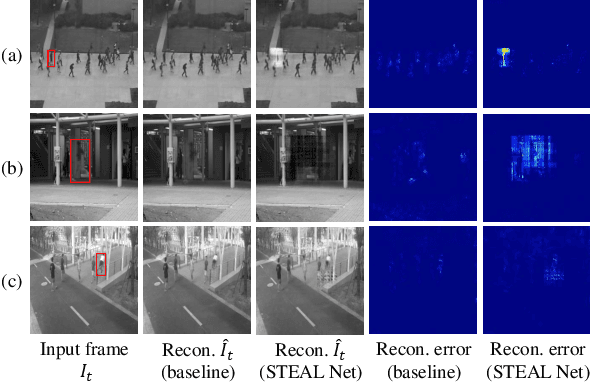Synthetic Temporal Anomaly Guided End-to-End Video Anomaly Detection
Paper and Code
Oct 19, 2021



Due to the limited availability of anomaly examples, video anomaly detection is often seen as one-class classification (OCC) problem. A popular way to tackle this problem is by utilizing an autoencoder (AE) trained only on normal data. At test time, the AE is then expected to reconstruct the normal input well while reconstructing the anomalies poorly. However, several studies show that, even with normal data only training, AEs can often start reconstructing anomalies as well which depletes their anomaly detection performance. To mitigate this, we propose a temporal pseudo anomaly synthesizer that generates fake-anomalies using only normal data. An AE is then trained to maximize the reconstruction loss on pseudo anomalies while minimizing this loss on normal data. This way, the AE is encouraged to produce distinguishable reconstructions for normal and anomalous frames. Extensive experiments and analysis on three challenging video anomaly datasets demonstrate the effectiveness of our approach to improve the basic AEs in achieving superiority against several existing state-of-the-art models.
 Add to Chrome
Add to Chrome Add to Firefox
Add to Firefox Add to Edge
Add to Edge